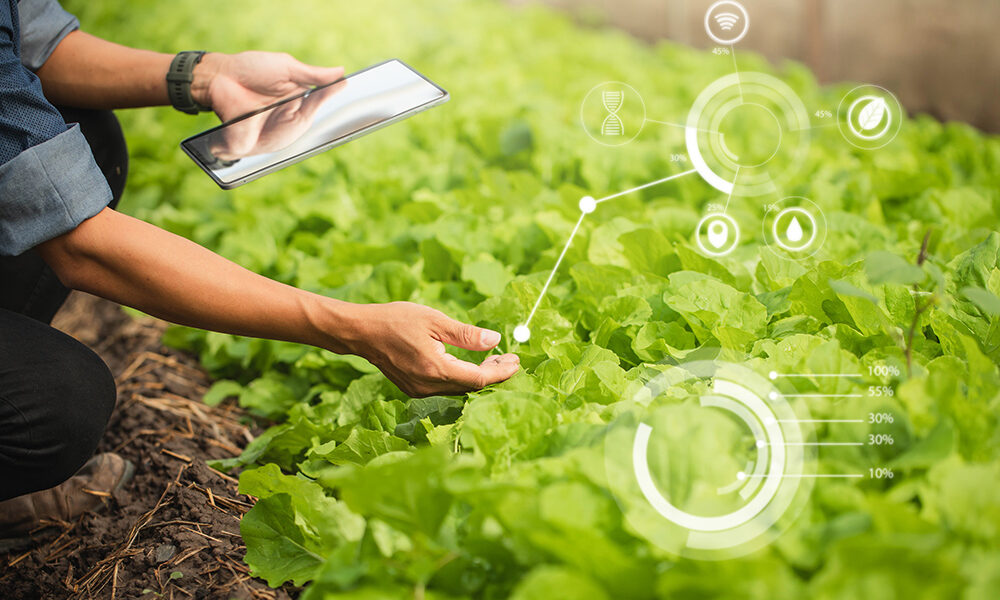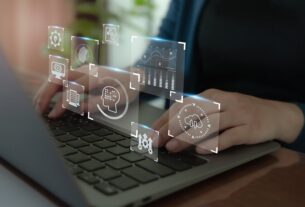Smart farming, also known as precision agriculture, has emerged as a game-changer in the agricultural industry. By harnessing the power of data analytics and IoT sensors, farmers can revolutionize their practices, improve crop yields, and ensure sustainable agricultural practices. In this blog, we will delve into the pivotal role of data analytics and IoT sensors in the context of smart farming, exploring their benefits, applications, and the promising future they hold.
The Power of Data Analytics in Smart Farming
Data Analytics:
Transforming Farming Practices Data analytics has become a cornerstone of smart farming, enabling farmers to make informed decisions based on real-time data. By leveraging advanced analytics techniques, such as machine learning and predictive modeling, farmers can uncover valuable insights from the vast amount of data collected by IoT sensors. This empowers them to optimize resource allocation, improve crop quality, and make proactive decisions to ensure sustainable agricultural practices.
Predictive Analytics:
From Data to Action Predictive analytics plays a crucial role in smart farming by forecasting future conditions and anticipating potential challenges. By analyzing historical and real-time data on weather patterns, soil conditions, and crop health, farmers can predict disease outbreaks, optimize irrigation schedules, and fine-tune fertilization practices. This proactive approach allows farmers to mitigate risks, protect crops, and optimize their yields.
IoT Sensors: Empowering Smart Farming Practices
Soil Sensors:
Cultivating Optimal Conditions IoT soil sensors provide valuable insights into soil moisture levels, temperature, and nutrient content. By continuously monitoring these parameters, farmers can optimize irrigation schedules, adjust fertilization practices, and ensure that crops receive the right amount of nutrients. This data-driven approach results in healthier plants, increased water efficiency, and improved overall crop quality.
Weather Sensors:
Weather-Proofing Crop Management Weather sensors play a vital role in smart farming, providing real-time data on temperature, humidity, rainfall, and wind speed. By integrating weather data with crop-specific requirements, farmers can make informed decisions regarding planting, harvesting, pest control measures, and resource allocation. This ensures that farming operations are aligned with weather conditions, minimizing risks and maximizing productivity.
Crop Monitoring Systems:
Real-Time Insights for Optimal Crop Health IoT-based crop monitoring systems combine various sensors to monitor crop health, growth, and development. These sensors measure parameters such as chlorophyll content, leaf temperature, and photosynthetic activity. By monitoring these indicators, farmers can detect early signs of nutrient deficiencies, diseases, or stress, allowing for timely interventions and targeted crop management strategies.
The Future of Smart Farming: Unleashing the Potential
Sustainable Agriculture:
Balancing Productivity and Environmental Responsibility Smart farming, with its focus on data-driven decision-making and optimized resource usage, has the potential to transform agriculture into a more sustainable industry. By implementing precision practices enabled by data analytics and IoT sensors, farmers can reduce the environmental impact of farming operations, minimize the use of agrochemicals, conserve water, and enhance biodiversity.
Enhancing Efficiency and Collaboration
The future of smart farming lies in the seamless integration of IoT solutions, data analytics, and collaborative platforms. By connecting various IoT devices and integrating data from multiple sources, farmers can gain holistic insights into their operations, streamline workflows, and make better-informed decisions. Additionally, improved connectivity enables real-time monitoring, remote control, and automation, enhancing operational efficiency and reducing costs.
Conclusion:
Data analytics and IoT sensors have emerged as powerful tools in the realm of smart farming. By leveraging real-time data, predictive analytics, and IoT solutions, farmers can optimize their practices, improve crop yields, and ensure sustainability. The integration of data analytics and IoT sensors enables precision agriculture, where every decision is driven by insights derived from data. As we move forward, the future of smart farming holds tremendous potential for innovation and growth, offering unprecedented opportunities to address global food challenges while safeguarding the environment.
FAQs (Frequently Asked Questions)
Q: What is the role of data analytics in smart farming?
A: Data analytics enables farmers to extract useful insights from the vast amount of data collected by IoT sensors. It helps optimize resource allocation, predict crop health, and make informed decisions for improved productivity and sustainability.
Q: How do IoT sensors contribute to smart farming?
A: IoT sensors provide real-time data on environmental parameters, soil conditions, and crop health. This information helps farmers monitor crops, optimize irrigation and fertilization practices, and detect early signs of diseases or stress.
Q: What are the benefits of implementing smart farming practices?
A: Smart farming practices optimize resource usage, improve crop yields, reduce environmental impact, and promote sustainable agriculture. They enable farmers to make data-driven decisions, minimize risks, and enhance overall operational efficiency.
Q: How can connectivity and integration enhance smart farming?
A: Improved connectivity and integration of IoT solutions enable seamless data sharing, real-time monitoring, and automation. This enhances collaboration, streamlines workflows, and enables more efficient and effective decision-making in smart farming operations.
Q: What is the future of smart farming?
A: The future of smart farming holds immense potential for innovation and growth. It involves the combination of advanced technologies, such as artificial intelligence and robotics, to further enhance productivity, sustainability, and automation in agricultural practices.




